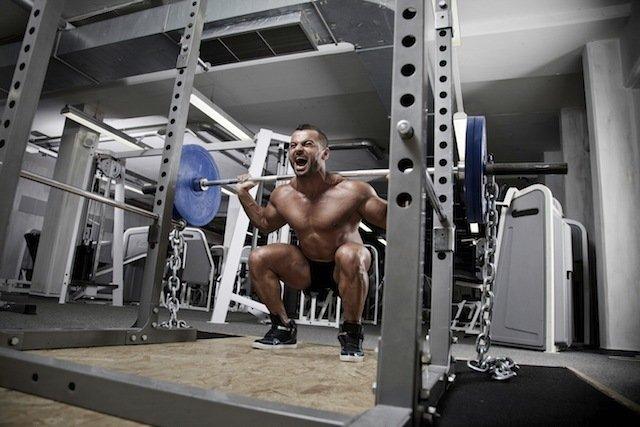

Add Bands and Chains to Boost Strength
Table of Contents
Add Bands and Chains to Boost Strength
by: Robbie Durand
Its not uncommon to see many gyms to have bands and chains next to the squat racks and bench press. Using bands and chains is a form of variable resistance training that can add variety to your training routine. Variable resistance modes, such as bands and chains have been and are currently being supplemented into strength, power, and velocity training programs to elicit neuromuscular and possibly changes in muscle size. The use of plyometric training such as drop jumps, plyo-pushups has been shown to increase muscle size and strength. High-velocity exercise explosive exercise like the use of bands and chains may spur new muscle growth as high-intensity, heavy-load exercise with the recruit primarily type 2 muscle fibers, which are the most prone to muscle growth. Much of the benefit of variable resistance training can be attributed to providing the neuromuscular system with an overload stimulus, in which muscles adapt to being required to move under greater loads than those they encounter during everyday activities.

Band-resisted ballistic and plyometric training such as the use of bench press bands and chains can be used to magnify the stretch shortening cycle, increasing the amount of eccentric potential energy stored in the involved musculotendon units, enhancing the rate of force and velocity development, and possibly power produced during the subsequent concentric phase. Think of your muscle as a rubber band, the When you pull back the rubber band to its most stretched point it is able to store energy for it to get back to normal size again. When skeletal muscle is stretched during the eccentric portion of muscle contraction, the tendon lengthens and the tendon is able to store energy like the rubber band and enables the muscle to spring back when it is contracted, like a rubber band.
Bands and Chains Beat Conventional Exercise for Strength
A previous study found that replacing some of the free weight resistance with elastic band resistance during bench press training resulted in greater increases in strength over a 13 week training period compared to bench pressing with traditional fixed resistance. The common features of variable resistance training machines are the presence of cables, pulleys, or other devices to create variability, coupled with the placement of the user in a fixed position to ensure that the user cannot recruit other muscle groups to assist in the completion of the prescribed movements.
Research Confirms Bands and Chains Boost Strength
The latest meta-analysis conducted in the Journal of Strength and Conditioning Research confirms that bands and chains are legit for increasing strength. The purpose of this study was to compare in a meta-analysis the effects of a long-term (>= 7 weeks) variable resistance training program using chains or elastic bands and a similar constant resistance program in both trained adults practicing different sports and untrained individuals. Seven studies involving 235 subjects fulfilled the selection and inclusion criteria. Variable resistance training led to a significantly greater mean strength gain than conventional weight training. An extra 5% increase in 1RM and thus 2x greater strength gains on the bench. An extra 11% increase in 1RM and thus 2.6x greater strength gains for squats. Long-term variable resistance training training using chains or elastic bands attached to the barbell emerged as an effective evidence-based method of improving maximal strength both in athletes with different sports backgrounds and untrained subjects.
Soria-Gila MA, Chirosa IJ, Bautista IJ, Chirosa LJ, Salvador B. EFFECTS OF VARIABLE RESISTANCE TRAINING ON MAXIMAL STRENGTH: A META-ANALYSIS. J Strength Cond Res. 2015 May 8.
McMaster, D, Cronin, J, and McGuigan, M. Forms of variable resistance training. Strength and Conditioning Journal, 31(1): 50-64, 2009.
Anderson, C, Sforzo, G, and Sigg, J. The effects of combining elastic tension and free weight resistance on strength and power in athletes. Journal of Strength and Conditioning Research 22(2): 567-574, 2008.
Bellar, D, Muller, M, Barkley, J, Kim, C, Ida, K, Ryan, E, Bliss, M, and Glickman, E. The effects of combined elastic and free-weight tension on one-repetition maximum strength in the bench press. Journal of Strength and Conditioning Research 25(2): 459-463, 2011.
Wallace B, Winchester, J, and McGuigan, M. Effects of elastic bands of force and power characteristics during the back squat exercise. Journal of Strength and Conditioning Research 20(2): 268-272, 2006.
MUSCLE MEDIA MAGAZINE FOR MEN
The premier source of training, nutrition, supplements, fat loss and health for men.

















